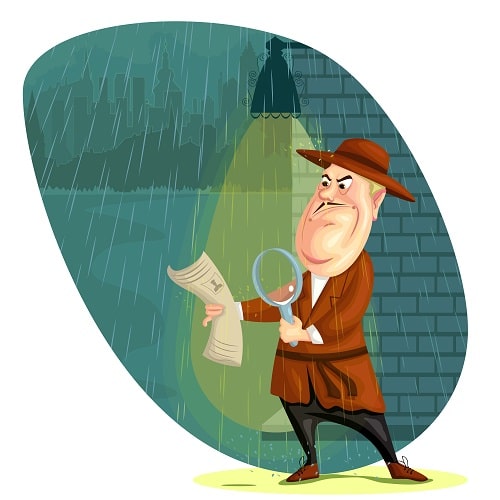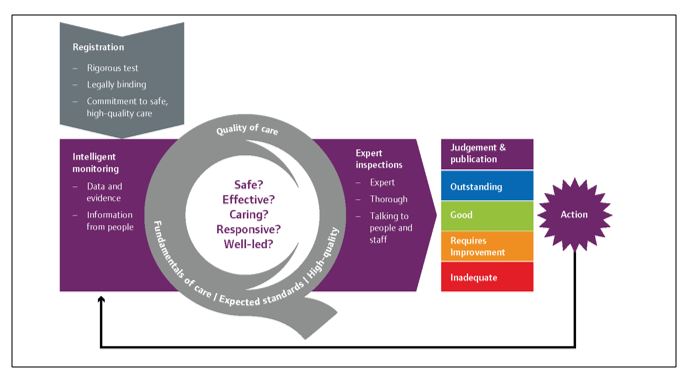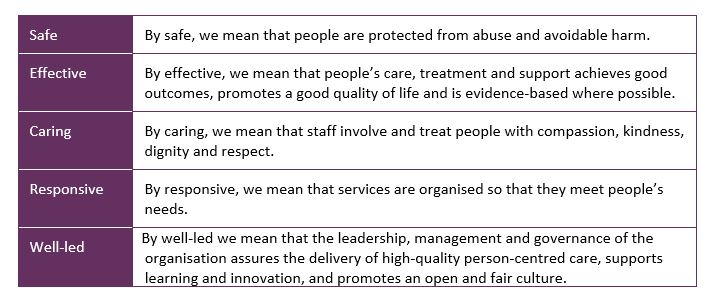This is what your new inspections will look like
This article will expand on the approaches to inspections which the CQC will use.
In their draft Provider Handbook, published in April 2014 for consultation, the CQC sets out its proposals for how inspections will work after 1st October 2014.
Some key overall points are:
Community services inspections will usually be pre-announced 48 hours before they will take place. This is not done in order to negotiate a suitable day, but to inform the service that the inspection is to take place on the appointed day, and to make sure that the manager, or a senior person in charge, is there on the day. “A senior person in charge” implies a working deputy to the manager if the manager is unavoidably absent. This is not the Provider if they are not in day-to-day management control, and therefore not able to provide detailed operational information. The inspector is interested in what is actually happening in the service, not what the Provider hopes or assumes is happening.
For residential services, site visits will normally be unannounced.
According to the handbook, the inspection team will consist of either one person, or a small team.
The expanded team may involve Experts by Experience, who will be people with personal experience of services either directly themselves, or by being a carer for someone else who has received care. They will be responsible for contacting service users for their opinions. The Expert will feed back to the Inspector, and may accompany them on their site visit.
Inspection frequencies will depend on the rating of the service:
- Inadequate – within 6 months of the last inspection
- Requires Improvement – within 12 months of the last inspection
- Good – within 18 months of the last inspection
- Outstanding – within 24 months of the last inspection
In addition to these inspections there will be inspections that:
- Respond to risk
- Are carried out to follow up on any action the CQC has told the Provider to take
The CQC will also each year inspect 10 per cent of randomly selected ‘good’ and ‘outstanding’ rated services that are not due an inspection in accordance with the timescales above.
Planning Inspections
The CQC inspection planning will take into account:
- Intelligent monitoring, as explained in our previous article
- Registration information
- Previous inspection reports and follow-ups
- Comments and feedback from people who use the service, and the public
- Healthwatch feedback
- Local voluntary and community groups, including equality groups
- Feedback from questionnaires sent by the CQC
- Feedback from telephone interviews
- Information from other agencies. Fire and environmental agencies are mentioned for residential services, but none are specified for community services.
- The Provider Information Return (see a later article)
- Statutory notifications
- Applications for variation of registration
- Information from staff, in the form of feedback from questionnaires
The site visit
The visit will begin with a meeting with the senior person on duty, and the inspector expects to see the manager, registered person, nominated individual, or senior person in charge.
The inspector will inform you which Key Lines of Enquiry they will be inspecting, and:
- Whether they are following up on any previous issues
- The proposed length of the inspection
- The roles of the inspection team members
- Who they plan to speak with
- Documents they want to review
- How they will feedback about what was found during the inspection
During the visit the inspector and/or the Expert by Experience will gather views about the service from people who use it, individually or in groups depending on the service type, speaking to them either in person, by telephone or by visiting them at home, and speaking to families and visitors, again depending on the service type. Where there are communication barriers they will use interpreters, other specialists and care staff expertise. The inspector will also speak to friends and relatives of people who use the service, either on the telephone or in the person’s home, before, during or after the day they visit the service office.
Information will also be gathered from staff, by which they mean the Registered Manager, senior person on duty, or care and support staff, cleaning staff, catering staff, maintenance staff, (depending on the service type) or all of these.
Other information will be gathered by:
- Observing care (but not intimate personal care)
- Using the SOFI 2 (Short Observational Framework for Inspection) tool when there are people using the service who are unable to tell them about the care they receive (in residential services)
- Tracking individual care pathways (care plans)
- Talking to volunteers, community professionals and other people involved in the service
- Looking at the environment, including individual and communal rooms (in residential services)
- Reviewing records
In some situations where they have concerns they may seize some forms of evidence, use photographs and take copies of documents. They may also need to gather evidence under the provisions of the Police and Criminal Evidence Act 1984 (PACE). If they do this, they will explain to the senior person on duty what they are doing and why.
Throughout the inspection the inspector will continuously evaluate the evidence they have seen, and make adjustments to their assumed schedule to take account of findings, obviously in particular any concerns they may have.
If the inspector finds any concerns around safeguarding, they will invoke the CQC safeguarding protocol and bring the matter to the attention of the manager or person in charge. If the person subject to the abuse is deemed to be at risk, the Inspector will take immediate appropriate action.
Closing the visit
At the end of the inspection visit to the service, the inspector will hold a feedback meeting with the person in charge on the day of the inspection. At this point in the inspection the inspector will only be able to give high level feedback which will not include what the rating for the service might be.
At this meeting the inspector will:
- Explain what has been found during the visit
- Highlight any issues that have emerged
- Explain that this is preliminary feedback and that they cannot make a judgement until they have considered all the evidence together. For example, there may be evidence from Experts by Experience to analyse, or feedback from people they could not speak with on the day
- Say when the report can be expected, how any factual inaccuracies can be challenged and what the publishing arrangements are
- Answer any questions from the person in charge and receive their feedback on the inspection process so far
- Say what the next steps will be
Background
In Part 1 of the series we have seen how the Care Quality Commission has proposed to implement from October 2014 a new regime of registration and inspection in response to failures of the current regime to spot and deal with poor quality care before too many people were harmed.
We saw that the CQC proposes a new, clarified and re-focussed registration and inspection regime, demonstrated by the following schematic.
The schematic demonstrates that the CQC regard their overall registration process as having five steps, these being:
- Registration
- Intelligent Monitoring
- Expert inspections
- Judgement and publication
- Action, if indicated by the inspection outcome
(Provider Handbook (Adult Social Care) Consultation, Page 2)
The scope of each of these processes is based on the new definitions of quality, these being:
(Provider Handbook (Adult Social Care) Consultation, Page 2)
Michael Dempsey – QCS Compliance Director




